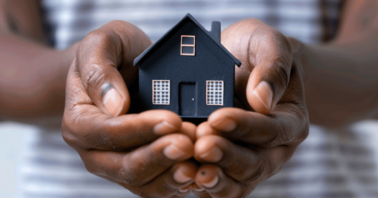- In recent years, the world has experienced significant climate deterioration, largely attributed to human activities such as the emission of greenhouse gasses.
- Sustainable construction is a holistic approach to building that minimizes environmental impact while promoting social and economic benefits.
- Beyond environmental protection, sustainable construction offers economic and social benefits.
- Sustainable construction can enhance a company’s reputation and competitiveness in the marketplace
In recent years, the world has experienced significant climate deterioration, largely attributed to human activities such as the emission of greenhouse gasses. These emissions have accelerated global warming, leading to more frequent and severe weather events, rising sea levels, and other environmental challenges. Concurrently, the global population continues to grow, driving an increased demand for housing and infrastructure. This growth often comes at a substantial environmental cost, as it can lead to deforestation, increased energy consumption, and higher levels of pollution.
Moreover, the urgency to meet this rising demand has sometimes resulted in substandard construction practices. These practices not only compromise the quality and safety of buildings but also exacerbate environmental degradation. Consequently, it has become imperative to adopt sustainable construction practices and materials to mitigate these negative impacts and promote a healthier planet.
READ MORE: 5 Simple Changes You Can Make to Create an Eco-friendly Home
Table of Contents
What is Sustainable Construction?

Sustainable construction is a holistic approach to building that minimizes environmental impact while promoting social and economic benefits. It focuses on efficiently using resources like energy, water, and materials throughout a building’s life cycle, from design to demolition. By integrating energy-efficient systems, renewable energy sources, and eco-friendly materials, sustainable construction practices reduce waste, lower carbon emissions, and enhance environmental performance.
At its core, sustainable construction creates structures that are environmentally responsible and resource-efficient. This involves using innovative building techniques and materials that reduce reliance on non-renewable resources and minimize waste. Examples include recycled materials like bamboo and steel, energy-efficient insulation, and water conservation systems. Sustainable construction also aims to improve the well-being of occupants and communities while ensuring economic viability, addressing both immediate and long-term environmental impacts.
READ MORE: Konza City: Commitment to Sustainable Development
What are some of the Sustainable Construction Practices?
- Energy Efficiency: This includes incorporating solar panels allowing buildings to generate renewable energy, cutting electricity costs and carbon footprints. Energy-efficient HVAC systems, with variable speed drives and advanced controls, further reduce energy use. For example, Two Rivers Mall has adopted these practices, demonstrating the effectiveness of energy-efficient design in sustainable construction.
- Water Conservation: Efficient water use is crucial for sustainable construction. This can be achieved through the installation of low-flow fixtures, rainwater harvesting systems, and greywater recycling systems.These measures not only reduce the demand for potable water but also help manage stormwater runoff, reducing the risk of flooding and water pollution.
- Waste Reduction: Construction and demolition activities generate a substantial amount of waste, much of which ends up in landfills. Sustainable practices aim to minimize waste through careful planning and design, efficient use of materials, and recycling of construction debris. Prefabrication and modular construction techniques can also reduce waste by allowing precise control over material usage and reducing the need for on-site adjustments.
- Indoor Environmental Quality: Ensuring a healthy indoor environment is essential for the well-being of building occupants. This involves using non-toxic, low-emission materials and incorporating ventilation systems that provide adequate fresh air. Natural lighting and green spaces within buildings can also enhance indoor environmental quality, contributing to occupants’ physical and mental health.
The importance & Benefits of Sustainable Construction
Sustainable construction addresses environmental challenges by focusing on resource efficiency, waste reduction, and lower energy consumption. It helps combat climate change and conserve natural resources, integrating energy-efficient systems, renewable energy sources, and eco-friendly materials to reduce greenhouse gas emissions and promote long-term environmental stewardship.
Beyond environmental protection, sustainable construction offers economic and social benefits. It lowers operating costs, increases property value, and qualifies for financial incentives. Additionally, it enhances occupant health and well-being through better air quality and natural lighting. Sustainable buildings are also more durable and adaptable, offering long-term resilience and reduced maintenance costs, making them a comprehensive solution for a sustainable future.
Conclusion
The construction industry is at a critical juncture, with the potential to lead the way toward a more sustainable future. Embracing sustainable practices and materials not only addresses environmental concerns but also offers economic and social benefits. Reduced energy and water consumption lower operating costs, while healthier indoor environments improve productivity and well-being.
Moreover, sustainable construction can enhance a company’s reputation and competitiveness in the marketplace. As consumers and stakeholders increasingly prioritise sustainability, companies that demonstrate a commitment to eco-friendly practices are likely to gain a competitive edge.
In conclusion, sustainable construction practices and materials are essential for mitigating the environmental impact of building activities. By adopting energy-efficient designs, conserving water, reducing waste, and using innovative materials, the construction industry can play a pivotal role in promoting a sustainable future. The journey toward greener construction is ongoing, requiring continuous innovation, collaboration, and commitment to sustainability goals.



